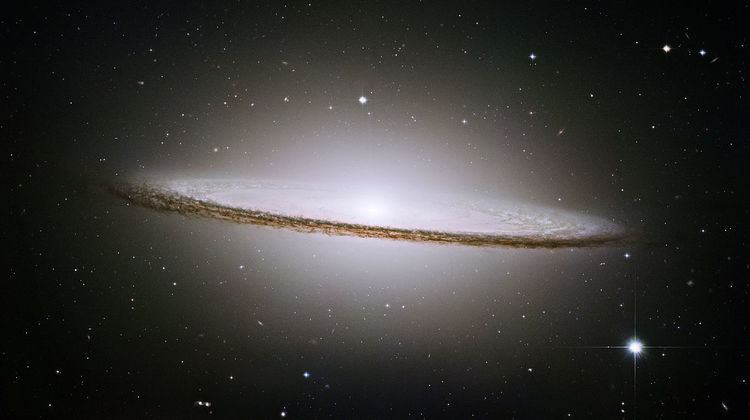 | ||
A low-ionization nuclear emission-line region (LINER) is a type of galactic nucleus that is defined by its spectral line emission. The spectra typically include line emission from weakly ionized or neutral atoms, such as O, O+, N+, and S+. Conversely, the spectral line emission from strongly ionized atoms, such as O++, Ne++, and He+, is relatively weak. The class of galactic nuclei was first identified by Timothy Heckman in the third of a series of papers on the spectra of galactic nuclei that were published in 1980.
Contents
Demographics of LINER galaxies
Galaxies that contain LINERs are often referred to as LINER galaxies. LINER galaxies are very common; approximately one-third of all nearby galaxies (galaxies within approximately 20-40 Mpc) may be classified as LINER galaxies. Approximately 75% of LINER galaxies are either elliptical galaxies, lenticular galaxies, or S0/a-Sab galaxies (spiral galaxies with large bulges and tightly wound spiral arms). LINERs are found less frequently in Sb-Scd galaxies (spiral galaxies with small bulges and loosely wound spiral arms), and they are very rare in nearby irregular galaxies. LINERs also may be commonly found in luminous infrared galaxies (LIRGs), a class of galaxies defined by their infrared luminosities that are frequently formed when two galaxies collide with each other. Approximately one-quarter of LIRGs may contain LINERs.
Star formation in LINERs
A number of surveys have been performed to explore the connection between star formation and LINER activity. If a connection can be found between star formation activity and LINER activity, then this strengthens the possibility that LINERs are powered by the hot gas found in star formation regions. However, if star formation cannot be found in LINERs, then this definitively excludes star formation as powering LINER emission.
Star formation in LIRGs with LINERs
Recent observations with the Spitzer Space Telescope show a clear connection between LINER emission in luminous infrared galaxies (LIRGs) and star formation activity. The mid-infrared spectra of LIRGs with LINERs have been shown to look similar to the mid-infrared spectra of starburst galaxies, which suggest that infrared-bright LINERs are powered by star formation activity. However, some mid-infrared spectral line emission from AGN have also been detected in these galaxies, indicating that star formation may not be the only energy sources in these galaxies.
Star formation in normal galaxies with LINERs
Normal nearby galaxies with LINERs, however, appear to be different. A few near-infrared spectroscopic surveys have identified some LINERs in normal galaxies that may be powered by star formation. However, most LINERs in nearby galaxies have low levels of star formation activity. Moreover, the stellar populations of many LINERs appear to be very old, and the mid-infrared spectra, as observed by the Spitzer Space Telescope, do not appear similar to the spectra expected from star formation. These results demonstrate that most LINER in nearby normal galaxies may not be powered by star formation, although a few exceptions clearly exist.
